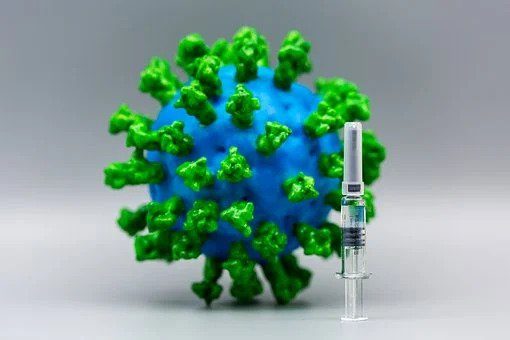A new antibiotic with latest features
Invariably there is high demand to discover new generation antibiotics due to alarming threat due to emergence of drug resistant bacterial pathogens. Owing to this public health catastrophe, a multi-institutional group of scientists have discovered a new antibiotic, ‘Pseudouridimycin’ (PUM). It is natural product extracted from a microbe present in the soil of Italy. The chemical nature of PUM is formamidinylated, N-hydroxylated Gly-Gln dipeptide conjugated to 6′-amino-pseudouridine. It is the first antibiotic that acts as a nucleoside-analog inhibitor of bacterial RNA polymerase (RNAP) but not of human RNA polymerase. Pseudouridimycin mimics a nucleoside triphosphate (NTP) that binds tightly to the NTP binding site on bacterial RNAP; thereby it prevents binding of NTPs and blocks transcription in bacteria. The team reported that PUM inhibits a broad spectrum of drug sensitive and drug resistant bacteria in vitro and protected mice from Streptococcus pyogenes infection. It has the potential to fight against drug resistance pathogenic bacteria.
(Cell, 2017; 169: 1240. DOI: 10.1016/j.cell.2017.05.042)
Use of smartphone to test male fertility
Infertility or childlessness is a global and serious reproductive complication that leads to various unwanted social consequences for many married couples. One of the studies reported that globally about 40% of infertility cases are linked to male infertility factors. Many a times the cause of infertility in couples due to male factors is not determined because of many social and economic reasons. Therefore, a team of researchers from Harvard Medical School, USA developed a very cheap, easy-to-use and rapid method to detect male fertility at home using a smartphone. The test includes a combination of hardware and software – a smartphone with a special app, microchip to hold semen sample, an accessory case with lenses and an LED to illuminate and magnify the sperms. The phone camera records a short video of semen sample in the microchip and the app analyses the video using algorithm to track the sperm movement and finally gives the total sperm count and the motility rate. The only factor not taken into account by the test is the sperm morphology, which is considered in microscope-based testing and computer-assisted semen analysis (CASA). The team claimed that the smart device detected male fertility within 5 seconds with 98% accuracy in a trial and finally they are in queue to file for FDA approval.
(Science Translational Medicine, 2017; 9: eaai7863. DOI: 10.1126/scitranslmed.aai7863)
Oils from sugar
Attempts are being continuously made for production of renewable biofuels with many success stories but it is still a challenge to produce high-energy fuels such as diesel. Researchers from Massachusetts Institute of Technology have genetically reprogrammed a yeast strain known as Yarrowia lipolytica that can convert sugar to fats. Naturally Yarrowia lipolytica produces lipids but the researchers have modified the metabolic pathway in such a way that its efficiency to convert sugar molecules to lipids is increased by 30%. To achieve this goal, they engineered Yarrowia with synthetic pathways to convert surplus NADH, a glycolytic product, to NADPH, a lipid synthesis precursor. The team remarked that although renewable fuel such as ethanol has been made from corn, their findings may put new pillars to produce high-energy density fuels like diesel for running heavy vehicles in the near future.
(Nature Biotechnology 35, 173–177 (2017); DOI:10.1038/nbt.3763)
Breathable live suit for athletes
A team of scientists from Massachusetts Institute of Technology has designed a special suit and shoes with ventilating flaps for the athletes. Thumbnail- to finger-sized flaps in the suit automatically get close and open in response to an athlete’s body heat and sweat. The researchers designed the garment using a cell-printing method. At first, they modified non-pathogenic bacteria (e.g. E. coli) that swell, shrink and produce fluorescence in response to humidity gradient. The parallel lines of these cells were printed on sheets on rough latex, creating two layer structures. They designed the shape and size of the flaps with the cell-line latex and tailored it across the back of the suit. The flaps were supported by certain frame in such a way that bio-fabricated inner cell layer does not directly touch the skin but the cells can sense the humidity of the air just above the skin. The cells act as tiny sensors and actuators that push the flaps to open when an athlete starts sweating and pulls it back to close position when the body is cooled. In the trial, it was found that after five minutes of exercise, when the athletes felt warm and sweaty, the flaps begin to open automatically and the skin temperature was lowered along with decrease in sweat. Using the same principle, a running shoe was also designed by the team and they are now looking forward to commercialize the design by collaborating with sportswear companies.
(Science Advances, 2017; 3:e1601984. DOI: 10.1126/sciadv.1601984)
The dark side of CRISPR
The CRISPR/Cas system is the latest, simplest, most versatile and precise genome editing tool that is creating buzz among the current scientific communities across the globe. Despite of its promising results and its potential as a tool for genome editing and treating many genetic diseases, it can impart certain uncontrollable changes in the genome that may be detrimental. In a recent study, carried out by a bench of scientists from USA, it has been reported that the CRISPR/Cas system can introduce hundreds of off-targeted fortuitous mutations, deletions and insertions in the genome. In the experiment, the researchers have successfully restored the sight in mouse model by editing the Pde6b gene responsible for blindness. Upon whole genome sequencing (WGS) of the gene therapy recipients, it was revealed that there were more than 1500 single-nucleotide mutations and unexpected high number of large insertions and deletions. These off-target changes even failed to be predicted by computer algorithms, which generate likely off-target sites for a given guide RNA used in CRISPR system. Finally, the team concluded that even though there may not be any observable changes in the CRISPR edited animals, one may miss the potential off-target mutations which can be of destructive nature, if WGS is not performed.
Nature Methods, 14: 547-548 (2017); DOI:10.1038/nmeth.4293




